[Micro]sensing the Future
![[Micro]sensing the Future](https://sleep-apnea-dentist-nj.info/wp-content/uploads/2014/06/AirAidSleepSensor-300x137.png)
Notes from Dr. Norman Blumenstock
The tiny recorder that improves compliance monitoring can be a game changer for oral appliance therapy.
Published on May 28, 2014, By Sree Roy

Could the key to mass acceptance of oral appliances for mild to moderate OSA be a recorder that’s smaller than a fingernail?
Good things come in small packages, so the saying goes. In the field of dental sleep medicine, many oral appliance manufacturers and dentists say that a burgeoning tiny-sized technology may prove that to be true. About a centimeter in diameter, microsensors that record compliance in oral appliance users have the potential to level the playing field with CPAP for mild to moderate obstructive sleep apnea (OSA) patients, these stakeholders say.
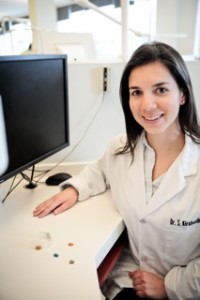
So far, the microrecorders employed in the United States are mostly in research settings and are not common in clinical practice. Stakeholders differ in whether they think the measurement devices will become ubiquitous, and, if so, what the likely timetable will be. “It’s hard to know what’s going to lead,” Bennett says. “Is the dentist going to take the first stand and decide to prove that patients are wearing oral appliances? Or is an insurance company going to say it’s not paying for oral appliances until compliance can be proved? It’s a few more years off before we see how it shakes out.”
Stacey Kirshenblatt, BA, DDS, a third-year orthodontic resident under the supervision of Dr Fernanda Almeida at the University of British Columbia in Canada, has done research on the reliability of thermo-sensitive microsensors.1 She compared three manufacturers’ sensors (two of which, by Germany-based companies TheraMon and Air Aid, are currently not available in the United States) and found the sensors to be reliable in logging wear time. She predicts that more manufacturers will enter the market. “As the use of these sensors is also important for the orthodontic population and the use of removable appliances, it is likely that other companies may start the development of similar technology in the future. It is going to be a large market,” Kirshenblatt says.
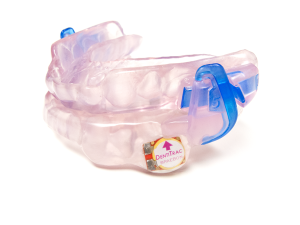
Richard Bonato, PhD, president and CEO of BRAEBON, is certain oral appliance compliance measurement will become the standard of care in the future. “I anticipate payors will eventually require objective oral appliance therapy compliance measurement as part of insurance reimbursement,” he says. “Insurance payors will not reinvent the wheel but will expect oral appliance therapy to meet the same requirements as CPAP therapy.”
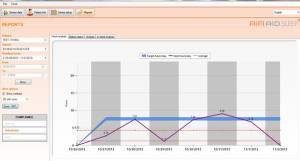
What Other Considerations Are There?
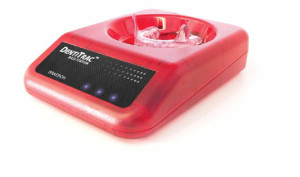
Significant antideception technologies are included in these new microsensors, such as requiring both a specific temperature range and head movement to count toward compliance, so the potential for fraud that existed in old sensors is being addressed. A main hurdle to adoption now is “cost, cost, cost,” says Charles Collins, chief operations officer of Airway Management, which offers appliances with compliance monitors. “We’ve had few orders to date, primarily due to pricing. I believe it will become more mainstream when industries (ie, transportation) begin to require it.”
In addition to cost, Bennett says the embedding material will be key to widespread adoption. “You may have different responses in different types of acrylic,” she says.
Kirshenblatt recommends further testing to examine whether the accuracy of the microsensors is affected by battery life. “Our trial only lasted 30 days, so it is unclear if the microsensors are as accurate toward the end of their lifespan,” she says. Another area for future research, she adds, is the positioning of the microsensors in the appliance (palatally or buccally) to evaluate if placement may be a factor in their accuracy.
Finally, Kirshenblatt says, “The ultimate and logical area for the use of the microsensors is in randomized clinical trials comparing the effectiveness of oral appliance and CPAP.”
Will Microrecorders Truly Level the Field?
Sleep product manufacturer ResMed is in a unique position because it makes both CPAPs and oral appliances. Kristie Burns, general manager, dental sleep, says, “Compliance monitoring is fine and may one day even be required, but, if you look at the documented hurdles, compliance isn’t the problem with oral appliances,” Burns says. “Objective and subjective reporting of oral appliance use has shown, repeatedly, that the patients who say they’re wearing oral appliances are, in fact, wearing them.2
“An objective measurement won’t change the experience for the patient or the payor. Just because there’s a compliance challenge with CPAP, it doesn’t mean all OSA therapies have a compliance problem.”
ResMed’s strategy is to overcome the main hurdle the company has identified as hindering oral appliances’ growth: consistent efficacy data. “If you want to grow oral appliances, you need to prove they work well for most patients, not that patients are using it,” Burns says. To that end, ResMed is focused on studies of its oral appliances that will show the therapy’s effect on the apnea/hypopnea index (AHI). “In the CPAP world, the device tells you it’s working. It reports the AHI, residual leak rate, and sleep effectiveness. It doesn’t simply report that it was on.” Burns says oral appliance prescriptions will reach a new level of growth when the research demonstrates consistent and reproducible efficacy in a majority of patients.
What Does the Future Hold?
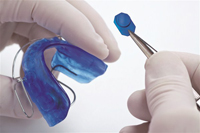
At the offices of microsensor manufacturers, future generations of the measuring recorders are already being developed. At Air Aid Sleep, which is actively looking for a North American distributor, plans are in action to eliminate its existing interval of 5 minutes between recordings in favor of a continuous measurement process. The company also is looking into substituting the patient’s smart phone for the reader at the doctor’s office.
BRAEBON’s Bonato, too, says enhancements are in the works. Bonato, though, cautions to always keep the technological advancements in perspective: “It is important to focus on patient choice and options, rather than on whether one type of therapy is superior or inferior to another type of therapy. No single therapy type is best for everyone. Our goal is to offer clinicians and patients choice and enable them to make decisions best suited for their needs.”
References
1 Kirshenblatt SJ, Chen H, Lowe A, Pliska B, Almeida F. Microsensor technology to monitor compliance with removable oral appliances. (Poster presentation, not yet published)
2 Vanderveken OM, Dieltjens M, Wouters K, De Backer WA, Van de Heyning PH, Braem MJ. Objective measurement of compliance during oral appliance therapy for sleep-disordered breathing. Thorax. 2013;68:91-96.




